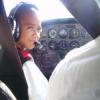
Sign in to follow this
Followers
0

Using Prop RPM to control Prop sound in turboprops...
By
TopGun, in FSX/FSX-SE Aircraft and Panel Design Forum - How To


By
TopGun, in FSX/FSX-SE Aircraft and Panel Design Forum - How To